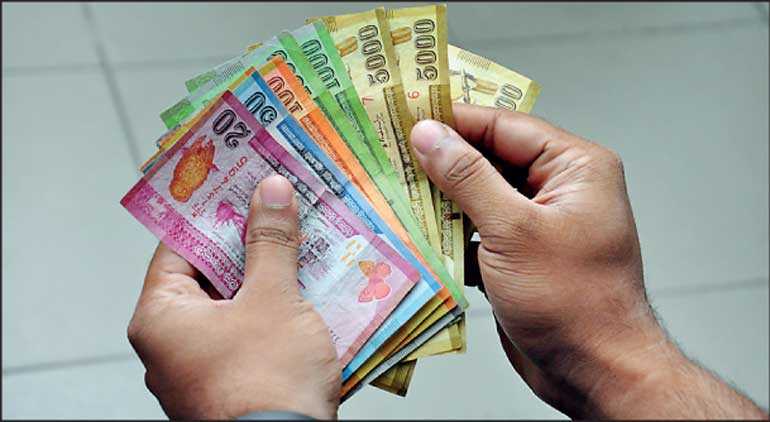Friday Dec 05, 2025
Friday Dec 05, 2025
Saturday, 10 April 2021 00:25 - - {{hitsCtrl.values.hits}}

The Central Bank took measures yesterday to change the amount of foreign exchange that exporters have to convert to rupees
By Uditha Jayasinghe
The Central Bank yesterday revamped the mandatory conversion of 25% of exporter earnings imposed in February to 10% within 30 days despite reserves dipping to $ 4.1 billion at the end of March.
The monetary authority published a Gazette notification announcing the change yesterday evening. It amended an initial notification issued on 18 February that made it mandatory for exporters to immediately convert 25% of their foreign earnings. That rule was later adjusted on 9 March and has been changed for the third time in the latest Gazette. Sri Lanka has set a goal of $ 16 billion earnings from exports for 2021.
“Every exporter of goods shall, within thirty (30) days upon the receipt of such export proceeds into Sri Lanka, convert ten per centum (10%) from and out of the total of the said exports proceeds received in Sri Lanka into Sri Lanka rupees, through a licensed bank,” the Gazette said.
“Provided, however, that such date of conversion, shall not be a date later than the date before which the export proceeds shall be received in Sri Lanka (i. e., not later than One Hundred and Eighty (180) days from the date of shipment),” it added.
The decision comes a day after the Central Bank announced it has kept policy rates steady to support economic recovery from COVID-19. The Central Bank on Thursday said it was seeking support from multiple sources to manage Sri Lanka’s upcoming debt repayments and reiterated commitment to meeting its obligations even as reserves slipped to $ 4.1 billion at the end of March.
The rupee has also been subject to persistent depreciation, caused partly by dollar demand for imports ahead of the festive season, according to analysts, reaching the Rs. 203.59 mark yesterday.
State Minister of Money, Capital Markets and Enterprise Reforms Ajith Nivard Cabraal is in Oman with a delegation to discuss potential forex assistance from the Bank of Muscat. Government officials are also engaged in talks with Bangladesh.
The overtures come after Prime Minister Mahinda Rajapaksa visited Bangladesh last month and met with the Governor of Bangladesh Bank, which functions as their Central Bank. Central Bank Governor Prof. Lakshman on Thursday said they were awaiting confirmation from the China Development Bank (CDB) for a long-delayed loan of about $ 700 million. The Government has been in negotiations with CDB since last year when it approved a $ 500 million loan to prop-up reserves.
Sri Lanka has two large debt repayments in May and July with the former expected to be about $ 720 million and the latter, $ 1 billion.
Recently, the Central Bank entered into a bilateral currency swap arrangement with the People’s Bank of China (PBOC) amounting to CNY 10 billion (equivalent to approximately $ 1.5 billion). But since it’s a local currency swap it is unlikely to reduce pressure on the rupee, according to experts.
“Although the rupee experienced some volatility recently, the continuation of the existing restrictions on non-essential imports and certain foreign exchange outflows, among others, is expected to help cushion pressures in the domestic foreign exchange market,” the Central Bank said in its latest monetary policy review.
The Governor emphasised Central Bank involvement in the currency market has been minimal with its role largely limited to instructing banks.
Gross official reserves were estimated at $ 4.1 billion (excluding the swap facility with the PBOC), with an import cover of three months, at the end of March.